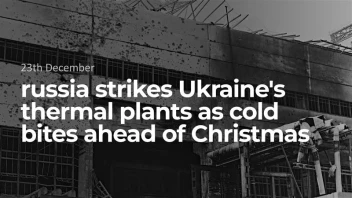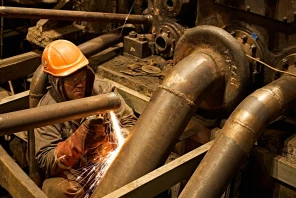Reaching net-zero and powering our infrastructure with green energy are the key tactics to battle global warming. Smart electricity grids can help us use renewable energy sources to their full potential. Additionally, this solution can transform our electricity systems into more resilient ones — a perfect upgrade to the fossil fuel dependent grids of today.
Let’s unpack what the smart grid is and how this technology can benefit us in the future.
What is a smart grid?
Smart grids are an electricity network solution that helps manage and regulate the energy we use, making the system more efficient and dependable. It utilises all progressive technology, such as renewable energy hybrid systems, to predict changes in electricity flow and adapt to them by intelligent supply modification. At the same time, the adjustment won’t cause blackouts — instead, the whole infrastructure will stay operational.
This is achieved by the intelligent flow of data and energy. By reading the information regularly, the smart grid can detect and react to changes and issues.
How do smart grids work?
A smart grid does everything that the traditional electricity grid does, such as delivering electricity from power plants to end users, including:
- businesses;
- factories;
- homes.
Energy moves through a network of transmission lines at high voltage to the distribution network via substations. Substations transform the high voltage into a usable lower voltage, which then powers the local infrastructure. When wondering "How does the smart grid work?", it is essential to understand that it goes beyond the basics. It connects the power plants to the users in a more proactive way by monitoring and adjusting the flow.
Benefits of smart grids
Smart power grids are not just about electricity management. They have a lot of benefits for the environment, end users, and the economy. We will explore the main benefits below.
Improved energy efficiency
The technology can analyse the data received from the grid and the end user, and then adjust the supply in real time. As it controls the power consumption in households, manages the electricity, and optimises the flow, energy use becomes more efficient. It’s no longer wasted when the demand is low and can be held back for when it is high.
Better integration of renewable energy
Currently, renewable energy can be unstable. Since it depends on the weather and local conditions, sun and wind power are not always dependable. Smart grid technology, however, can analyse the supply and demand patterns, promote a lower carbon future, and reinforce renewable energy usage.
It minimises the supply when consumers use electricity the least, and then stores it for when it is truly needed. Thus, it influences the adoption of renewable energy.
Enhanced reliability and resilience
The solution analyses the data in real-time and adapts right away. It can easily respond to power failures and blackouts through intelligent sensing by restoring the flow and switching to a different electricity storage. When natural disasters or extreme situations occur, it keeps the system reliable and resilient.
The future of smart grids
Smart grid history is still ongoing. Over 130 countries have already taken part in Net Zero 2050, meaning they will look into all possible solutions to minimize energy consumption and transition to renewable energy sources. A smart approach is what can support these goals.
The new technology can also create a proper connection between customer demand and the supply of clean energy. This will help balance the solar and wind-derived electricity when the weather is unstable by storing it for future demand spikes. And when we need more information about green energy, it will give us important insights into the data from local electricity chains.
Frequently asked questions
- How do smart grids differ from traditional power grids?
A smart grids definition tells us that the technology does everything a traditional one does. In addition to that, it manages the flow of electricity to maximize its efficiency. It monitors the demand and supply and creates a reliable energy system.
- What role do consumers play in smart grids?
The usual electricity system doesn’t see consumers as a proactive part of the system. A smart one, however, looks beyond the technology and understands that the end user can support the system by minimizing the electricity demand. A smart consumer takes an active part in the energy flow.







